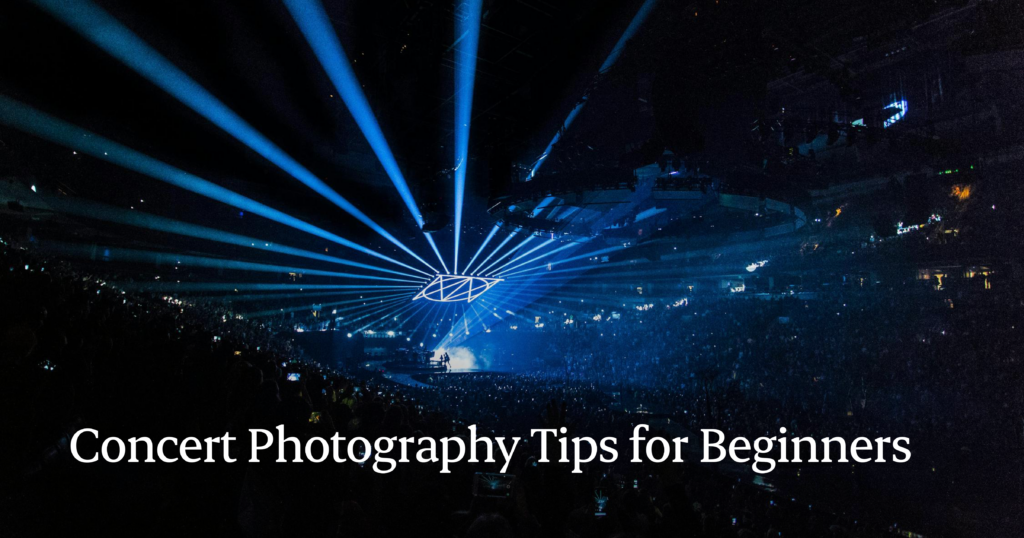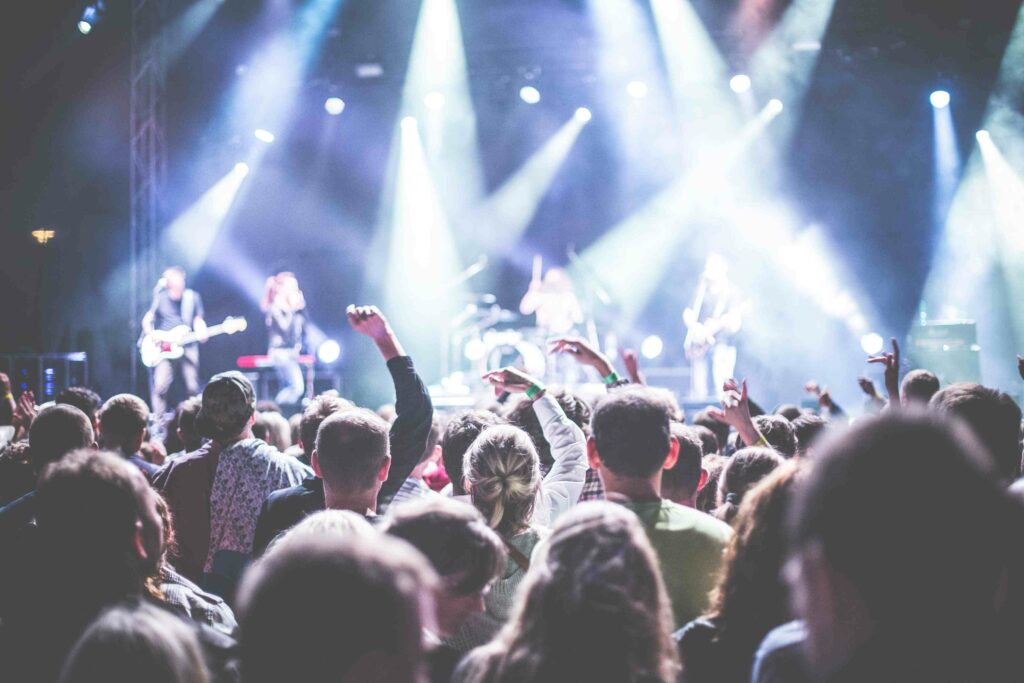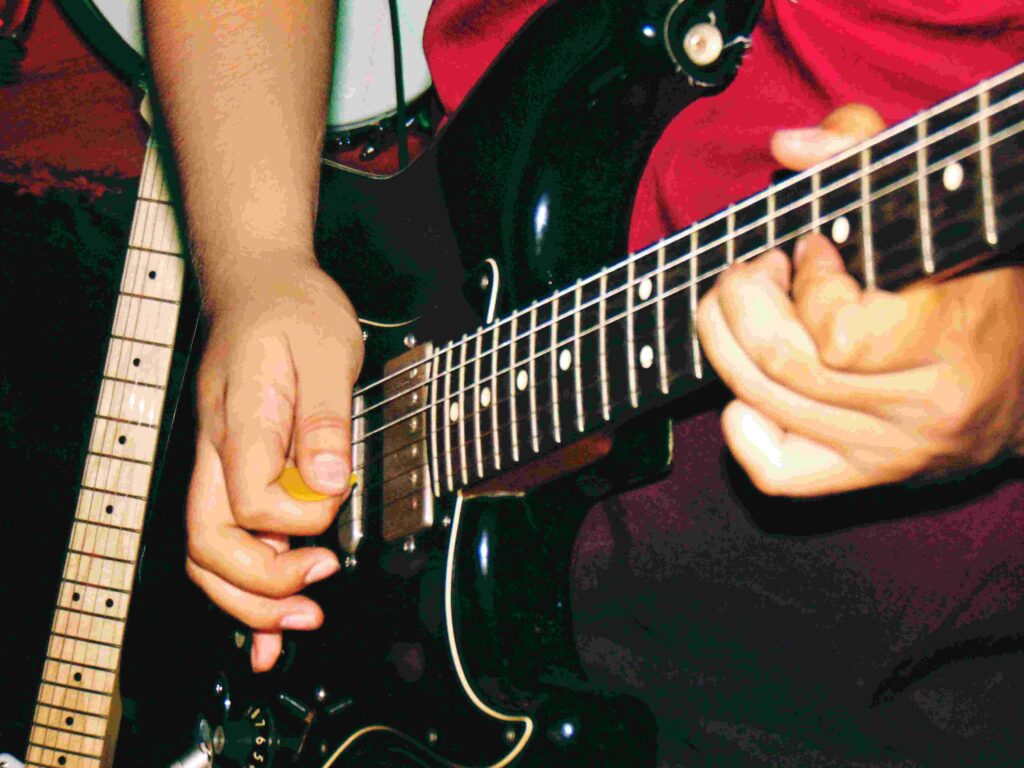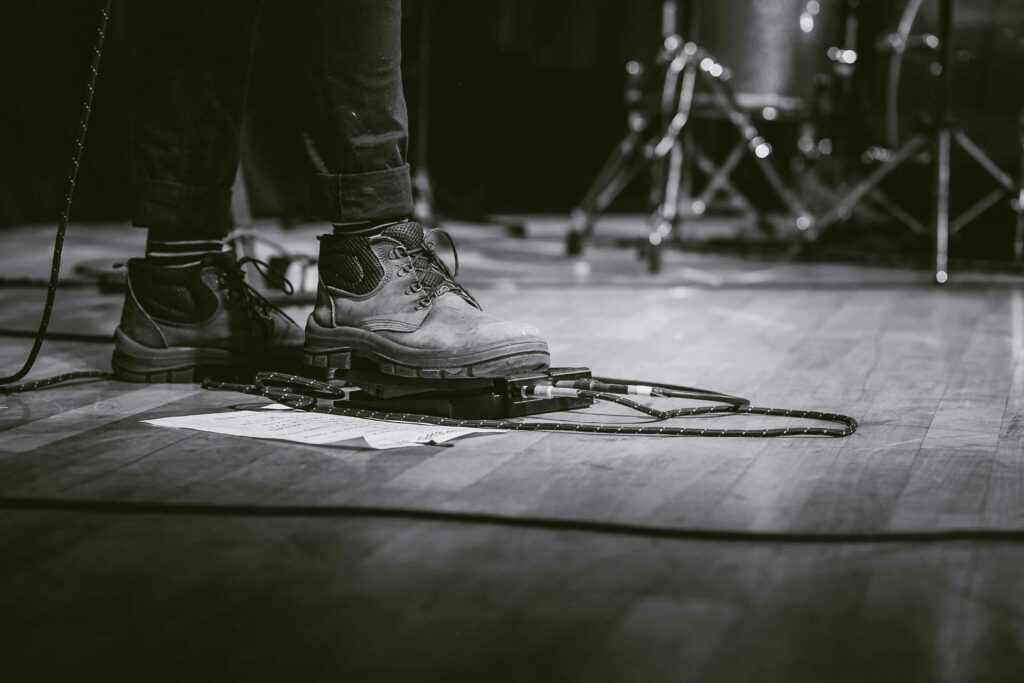11 Concert Photography Tips for Beginners
Concert photography is one of the most rewarding yet demanding genres a photographer can take on. For photographers used to more controlled environments like weddings or studio work, live music settings can be a sharp contrast.
But for those willing to take it on, concert photography can be one of the industry's most exhilarating and even lucrative paths.
Mastering it starts with proper preparation, camera gear, and workflow because success in the photo pit begins long before the lights go down.

Concert photography is about preparation, adaptability, and having a sharp eye for moments that capture the mood of a performance.
Whether you’re just starting or building your pro portfolio, these tips will help you navigate low-light venues, fast-paced stages, and the unique etiquette of live music events.
1. Choose the Right Camera
There’s no single “best” camera, but you’ll want one with excellent low-light performance, fast autofocus, and strong burst shooting capabilities.
Concert photography is unpredictable. One moment it’s complete darkness, the next it’s a flash of strobe light, and performers rarely stand still.
Full-frame mirrorless or DSLR bodies are the go-to for most professionals. Top picks include:
- Sony A7 III / A7 IV – Excellent high ISO performance and autofocus.
- Canon R6 / R5 – Fast, reliable, and great for low light.
- Nikon Z6 II / Z9 – Strong dynamic range and pro-level performance.
- Fujifilm X-T5 / X-H2S – Lightweight APS-C bodies with stunning color science, in-body stabilization, and fast subject tracking.
Crop sensor cameras, which use smaller sensors than full-frame models, can still be a solid choice, especially when starting out. Still, they tend to produce more image noise in low-light venues, which is a common challenge for concert photographers.
“For concert photography, I use an EOS 5D Mark III because of its high ISO capability, which is great for low-light situations. I also invested on an EF 70-200mm f/2.8L IS II USM telephoto lens that is essential for performances on a big venue, where zooming in for composition is crucial, especially when the performer constantly moves from one end of the stage to another.” — concert photographer Lemjay Lucas.
2. Choose the Right Lens
When shooting shows in unpredictable lighting, the right lens can make all the difference. It must respond quickly to stage movement and adapt to the environment:
- Fast primes (like a 35mm f/1.4 or 85mm f/1.8) are excellent for isolating band members and handling dim lighting.
- Zooms (like a 24–70mm or 70–200mm f/2.8) offer flexibility, especially in larger shows or when movement is unpredictable.
- Wide apertures (f/2.8 or faster) keep shutter speeds high and ISO manageable in low-light conditions.
In fast-paced, limited-access environments where you often shoot just three songs, a fast, responsive lens lets you adapt instead of missing the moment.
Additionally, a few thoughtful accessories can make a real difference in the photo pit. Dual card slots offer peace of mind when shooting high volumes, and a comfortable wrist strap or harness helps you move through tight crowds.
Fast memory cards, extra batteries, and even ear protection help you stay sharp and prepared throughout the night.
The right gear can help remove the obstacles that could stand in your way when the clock is ticking and space is tight.

3. Understand the Difference: Hobbyist vs. Professional Photography
While anyone in the crowd can grab a phone pic, professional concert photography requires more than just access — it demands skill, credentials, and a clear understanding of the process.
Shooting for a publication or venue often means getting a photo pass, which typically grants you a few minutes at the start of the show (usually the first three songs) and comes with restrictions like no flash.
That access is hard-earned and time-limited, so you’re working under pressure from the moment you step into the pit.
New photographers should build their experience at local shows and smaller venues. These spaces are often more open to cameras and offer the chance to develop your technique in unpredictable conditions without the high pressure of larger events.
Plus, smaller venues still come with real-world challenges — tight space, variable lighting, and moving performers but without the immediate intensity of an arena gig.
4. Do Your Homework Before You Show Up
Preparation can make or break your shoot. Before you arrive, take time to research the band and their stage setup. Watching videos of past performances can help you anticipate key lighting moments and understand where each member tends to be positioned.
Reviewing the setlist is also helpful, especially since the lighting and energy levels often shift dramatically from one song to the next.
Every venue is different—lighting rigs, stage height, and barricade distance all change from show to show, so understanding the space you’re walking into is just as important as understanding the performers.
It’s also worth getting familiar with the venue, whether you’ll be shooting from the photo pit, the soundboard, or the side of the stage, your position will influence the kind of gear you’ll need and the types of shots you can capture.
“Because you usually only get to shoot 3 songs you need to prepare and find out what happens during those first moments of the show. The best way to do this is to learn the show from YouTube where there will be plenty of fan uploads showing where each member of the band stands and what the stage show and lighting is like, and what are the must-see moments to capture.” - pro concert photographer, Steve Gerrard.
5. Pack Smart (But Efficiently)
While your camera and lenses do the heavy lifting, a few key accessories can make a big difference in how smoothly your shoot goes.
Concerts are fast-paced and unpredictable, and there's rarely time to troubleshoot in the moment. Always carry extra batteries and memory cards. Running out of power or storage mid-set isn't an option. A microfiber lens cloth is also a must for clearing dust or smudges between sets.
Space is usually tight, especially in smaller venues without photo pits. Earplugs are non-negotiable since you'll likely be near blaring speakers or stage monitors. High-fidelity plugs preserve sound quality while protecting your hearing, especially important if you shoot shows regularly.
Professional concert photographer Daniel Caceiro emphasizes the importance of preparation:
"I had my camera dying due to low battery on the very first gigs and once I ran out of space by not formatting my memory card, for example."
Lastly, consider wearing a small, comfortable crossbody or waist bag to keep gear accessible without getting in the way. The less you fumble, the better prepared you'll be when there's no time to waste.

6. Master Your Settings for Low-Light Conditions
There’s no time to fiddle with settings when performers move unpredictably, and your shooting window is limited.
Shooting in RAW gives you more control in post-production, helping correct exposure, color, and noise. Start with a wide aperture (like f/2.8), a fast shutter speed (at least 1/200 sec to freeze motion), and an ISO around 1600.
Depending on your camera, you might need to push that higher, but the tradeoff in noise is worth avoiding blur.
If you're new to manual mode, try starting in aperture priority. It automates shutter speed while letting you control depth of field. As you grow more confident, manual mode gives you full command in unpredictable lighting.
7. Don’t Just Spray and Pray. Be Intentional
Shooting nonstop the second the band appears is tempting, especially with a limited time window. But firing blindly will leave you with hundreds of unusable photos —and a major editing headache.
Subjects are often in constant motion—jumping, spinning, and running across the stage, so timing is everything. Instead, observe the stage. Wait for moments where the lighting flatters your subject, when a mic isn’t blocking their face, or when emotion peaks during a performance.
Even in darker moments, use the time to reposition yourself or quickly review your images to adjust settings. Intentionality leads to better results and less frustration later.
8. Respect the Rules and the Room
Concert photography is a privilege, not a free-for-all. Being near the stage means sharing tight spaces with fans, security, and other photographers. Always follow venue rules, avoid blocking the audience’s view, and never use flash unless you’re explicitly allowed.
Access is hard to get and easy to lose. Respect earns trust and long-term opportunities, while bad behavior in the pit can close doors quickly.
Space is limited and competitive, especially at big shows. Don’t monopolize the best spot or interfere with performers or distract them during the set. In an environment where everyone is shoulder-to-shoulder, professionalism matters as much as talent.
9. Tell the Story, Not Just the Action
A great concert photo doesn’t just show who was on stage, it shows what it felt like to be there. Aim to capture not just the lead, but the whole band, the crowd’s energy, and the venue's atmosphere. Use composition to your advantage: try off-center framing, lead lines, and layering to add depth and motion to your shots.
Since every venue is different, your storytelling approach needs to adapt. What worked in a small club won’t always translate to an outdoor amphitheater with a massive stage. Let the environment guide your choices, from lighting to angles, and use that variability to your advantage.
Variety is key. Wide-angle stage shots, tight close-ups, and candid in-between moments help create a complete visual narrative of the night.
10. Focus on Technique to Cut Through the Chaos
Great concert photography doesn’t come from luck but from timing, awareness, and control.
You’re working under pressure, with fast movement and no margin for error.
- Anticipate peak moments: concerts have rhythm both musically and visually. Study the artist’s performance style, setlist, and stage dynamics in advance. The more familiar you are with the show, the easier it is to predict mic grabs, jumps, or lighting changes and time your shots accordingly.
- Use burst mode with purpose: shooting in bursts can help you catch fleeting expressions or split-second gestures, but don’t overdo it. Fire short, controlled bursts during key moments instead of holding the shutter down. It’ll save you editing time later and give you more usable frames.
- Stabilize your stance: Poor handholding can lead to soft or shaky images even with fast shutter speeds. And when you’re shoulder-to-shoulder in a pit, having a grounded stance gives you the edge. Stand with your feet shoulder-width apart, tuck your elbows in, and press the shutter gently.
- Always shoot RAW: with constantly shifting light and extreme contrasts on stage, you’ll want full control over white balance, exposure, and shadows once you’re editing.
- Prioritize sharpness: keep your shutter speed at 1/250s or higher to freeze motion, especially for fast-paced sets. Use a wide aperture to let in more light, and don’t be afraid to push your ISO into the 3200–6400 range or beyond, depending on your camera. Use continuous autofocus or subject tracking to stay locked on your subject as they move across the stage.
- Forget the flash: flash is almost always off-limits, and that’s okay. The best concert photography images often embrace the stage lighting as part of the story. Look for silhouettes, backlight bursts, and contrasty shadows. Working with the light, not against it, is where the magic happens.
11. Choose the Right Post-Processing Tools
The work doesn’t end when the lights go out. Post-production is where your raw captures turn into a cohesive story, but it’s also where many photographers get bogged down. Sorting through hundreds of shots, picking out the keepers, and editing consistently takes time.
When you’ve shot hundreds of frames in a high-pressure, fast-paced shoot, culling manually becomes a serious bottleneck. This is when tools like Aftershoot can significantly speed up this process, flagging blurry images, closed eyes, and near-duplicates so you’re reviewing only the best.
From there, jump into editing. You can switch to the Edit tab in Aftershoot and apply your personal editing style, significantly speeding up your workflow. Aftershoot’s AI Editing tool works offline and supports RAW or JPEG files, helping you stay consistent without sacrificing control.
After a night of tight time windows, chaotic lighting, and fast action, smart post-processing tools let you reclaim time and focus on the story.

Concert Photography Takes More Than a Good Eye
Concert photography is a fast-paced, high-stakes craft that blends technical skill with creative intuition. Once you find your rhythm, the payoff, creatively and professionally, is hard to beat.
Whether you’re shooting local gigs or national tours, Aftershoot’s AI-powered tools help you photograph concerts more efficiently, without compromising your style.
Ready to streamline your concert photography workflow? Try Aftershoot 30 days for free. Claim your trial now!

